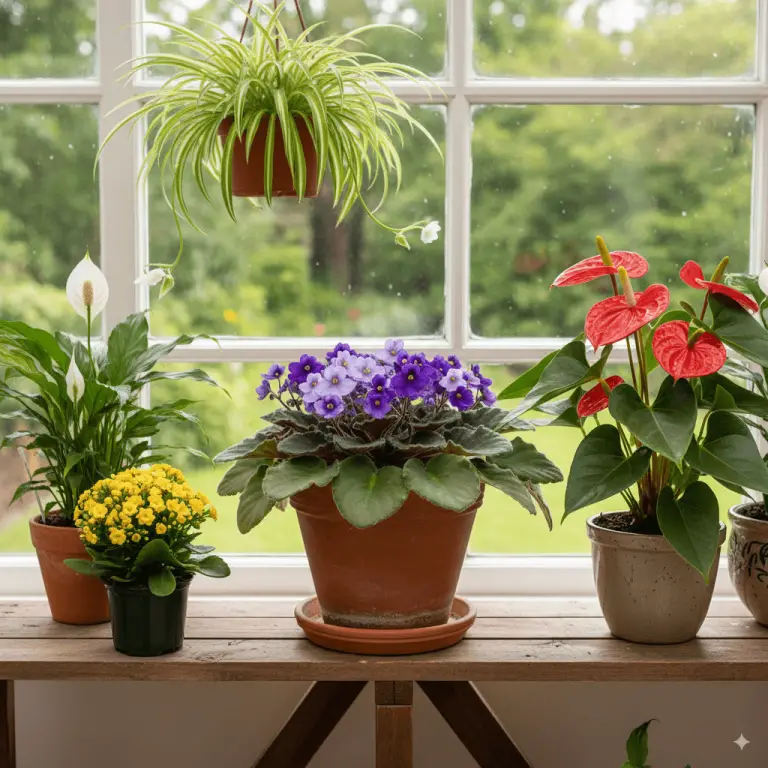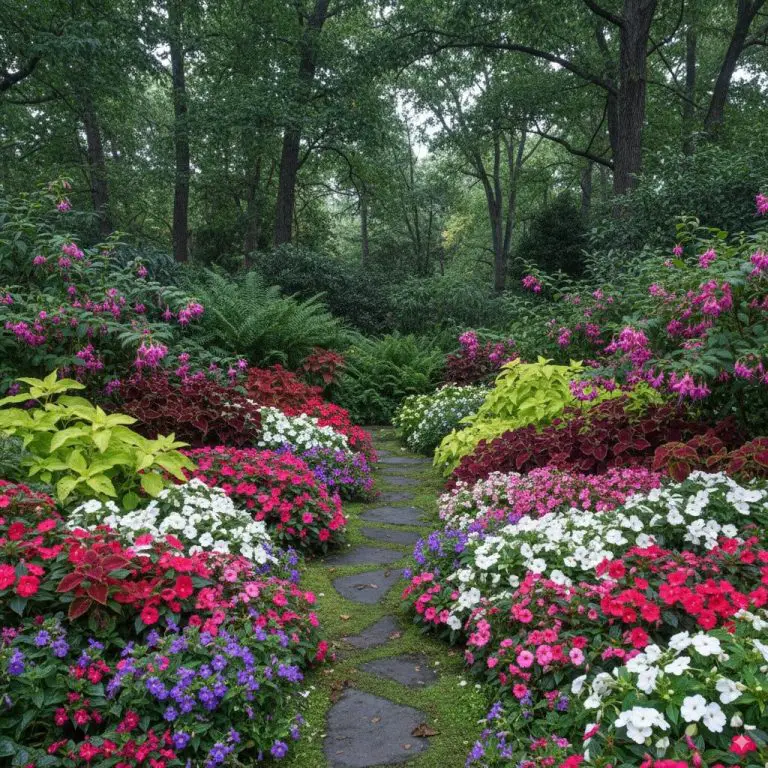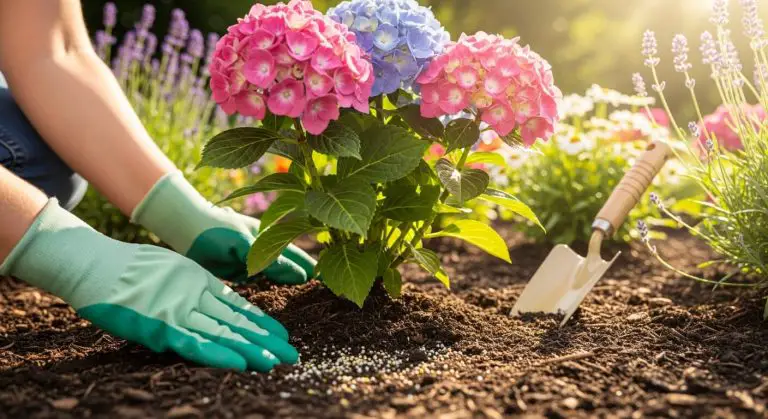Wall Flowering Plants: Your Complete Guide To Creating A Vertical Eden
Are you staring at a bare, boring wall, dreaming it could be a lush, vibrant garden? You’re not alone. So many of us have vertical spaces—a plain fence, a stark balcony wall, or the side of a shed—that are just begging for a touch of natural beauty.
I promise that transforming that dull space is easier than you think. With the right knowledge, you can create a breathtaking cascade of color and life using the magic of wall flowering plants. This isn’t just for expert gardeners with huge estates; it’s for anyone with a little bit of wall and a lot of heart.
In this complete wall flowering plants guide, we’ll walk through everything you need to know, hand-in-hand. We’ll explore the best plants for any situation, break down exactly how to get them started, and share the pro tips that will keep them thriving. Let’s turn that vertical space into your personal paradise!
What's On the Page
- 1 Why Grow Vertically? The Wonderful Benefits of Wall Flowering Plants
- 2 Choosing Your Champions: The Best Wall Flowering Plants for Every Garden
- 3 Getting Started: How to Wall Flowering Plants the Right Way
- 4 The Ultimate Wall Flowering Plants Care Guide
- 5 Troubleshooting: Solving Common Problems with Wall Flowering Plants
- 6 Going Green: Sustainable and Eco-Friendly Wall Flowering Plants Tips
- 7 Frequently Asked Questions About Wall Flowering Plants
- 8 Your Vertical Garden Awaits!
Why Grow Vertically? The Wonderful Benefits of Wall Flowering Plants
Before we dig in, let’s talk about why this is such a fantastic idea. Growing upwards isn’t just a trend; it’s a smart, beautiful, and rewarding way to garden. It’s a wonderful example of eco-friendly wall flowering plants in action.
Here are just a few of the amazing benefits of wall flowering plants:

🌿 The Companion Planting & Gardening Book (eBook)
Bigger harvests, fewer pests — natural pairings & simple layouts. $6.99
Get – $6.99
🪴 The Pest-Free Indoor Garden (eBook)
DIY sprays & soil tips for bug-free houseplants. $4.89
Get – $4.99- Maximizes Your Space: This is the biggest win, especially for those with small gardens, patios, or balconies. You can have a stunning flower display without sacrificing a single inch of precious floor space.
- Boosts Curb Appeal: A wall dripping with clematis or a fence covered in climbing roses instantly adds charm, character, and value to your home. It’s a living work of art!
- Creates a Microclimate: A green wall can help insulate your home, keeping it slightly cooler in the summer and warmer in the winter. It also provides a habitat and food source for pollinators like bees and butterflies.
- Improves Air Quality: Like all plants, they absorb carbon dioxide and release fresh oxygen. A vertical garden is your own personal air purifier.
- Hides Imperfections: Got an unsightly wall, an old fence, or a boring drainpipe? Wall-flowering plants are the most beautiful camouflage you could ask for.
Choosing Your Champions: The Best Wall Flowering Plants for Every Garden
The secret to a stunning vertical garden is choosing the right plant for the right place. Don’t worry—this is the fun part! Think about how much sun your wall gets, your climate, and how much maintenance you’re up for. Here are some of my tried-and-true favorites.
For Sun-Drenched, South-Facing Walls
These sun-worshippers will reward you with an explosion of blooms if they get at least 6-8 hours of direct sunlight.
- Climbing Roses (Rosa spp.): The undisputed queen of climbers. Varieties like ‘New Dawn’ or ‘Gertrude Jekyll’ offer classic beauty and intoxicating fragrance. They need a sturdy trellis or wires to cling to.
- Bougainvillea (Bougainvillea glabra): For those in warmer climates, nothing beats the vibrant, papery bracts of bougainvillea. It’s a true showstopper that thrives on heat and sun.
- Trumpet Vine (Campsis radicans): A vigorous grower with exotic, trumpet-shaped flowers that hummingbirds adore. Be warned: it can be very enthusiastic, so give it a strong support and room to grow!
For Shady, North-Facing Walls
A shady wall isn’t a problem; it’s an opportunity! These plants prefer cooler, shadier conditions and will brighten up any dark corner.
- Climbing Hydrangea (Hydrangea anomala petiolaris): Elegant and self-clinging, this beauty produces large, lacey white flowers in late spring. It’s slow to start, but your patience will be richly rewarded.
- Japanese Honeysuckle (Lonicera japonica ‘Halliana’): While some honeysuckles love sun, this variety tolerates shade well. Its incredibly fragrant white and yellow flowers will perfume your entire garden in the evening.
- More-patience Clematis (Clematis alpina, C. macropetala): Many clematis need sun, but these earlier-blooming types do wonderfully in part-shade. They offer delicate, nodding bell-shaped flowers.
For the Easy-Going Gardener
If you’re looking for low-maintenance options that are tough to kill, these are your new best friends. Perfect for beginners!
- Clematis (Clematis ‘Jackmanii’): This is perhaps the most famous and foolproof clematis. It produces a profusion of rich, velvety purple flowers and is a very forgiving vine. Just give it something to climb!
- Sweet Peas (Lathyrus odoratus): Technically an annual, sweet peas are incredibly easy to grow from seed and will quickly scramble up a net or trellis, providing beautiful, fragrant cut flowers all summer long.
- Star Jasmine (Trachelospermum jasminoides): This evergreen vine is a powerhouse. It has glossy green leaves year-round and covers itself in tiny, star-shaped, intensely fragrant white flowers in summer. It’s also quite drought-tolerant once established.
Getting Started: How to Wall Flowering Plants the Right Way
You’ve picked your plant—now it’s time to get your hands dirty! Following these steps will set your vertical garden up for success. This is where we get into the nitty-gritty of how to wall flowering plants.
Step 1: Prepare Your Support System
Some plants, like climbing hydrangea or ivy, are self-clinging and will attach directly to a wall. However, most climbers need a little help. Never let a twining vine attach directly to your home’s siding or brickwork, as it can cause damage over time.
Instead, install a support system first:
- Trellis: A wooden or metal trellis, installed a few inches away from the wall to allow for air circulation, is a classic and effective choice.
- Wire System: For a more modern, minimalist look, install horizontal wires using vine eyes screwed into the wall or fence posts. This is perfect for training roses and clematis.
- Wall Pockets/Planters: For non-climbing plants like petunias, fuchsias, or herbs, modular vertical planting systems are a fantastic option.
Step 2: Dig the Perfect Planting Hole
The base of a wall is often a very dry place due to “rain shadow.” To combat this, always plant your climber at least 12-18 inches (30-45 cm) away from the base of the wall.
Dig a hole that is twice as wide and just as deep as the plant’s container. Mix some good quality compost or well-rotted manure into the soil you removed. This enriches the soil and helps it retain moisture.
Step 3: Planting and Training
Gently remove the plant from its pot and tease out any circling roots. Place it in the hole at a 45-degree angle, leaning it towards the wall and its support system.
Backfill the hole with the enriched soil, firming it gently around the base. Water it in thoroughly—this is the most important drink of its life!
Finally, loosely tie the main stems to the lowest part of your trellis or wire support using soft garden twine. This encourages it to start its journey upwards.
The Ultimate Wall Flowering Plants Care Guide
Your plant is in the ground—congratulations! Now, let’s keep it happy. This simple wall flowering plants care guide covers the essentials. Adhering to these wall flowering plants best practices will ensure a healthy, blooming display.
Watering: The Golden Rule
As we mentioned, the base of a wall is dry. Vertical gardens, especially those in containers, also dry out much faster than garden beds. Check the soil regularly. If the top inch is dry, it’s time to water.
Water deeply at the base of the plant, allowing the water to soak in rather than run off. A long, slow drink is much better than a quick splash.
Feeding for Fabulous Flowers
To get the best blooms, your plants need food. In the spring, apply a slow-release granular fertilizer formulated for flowering plants. You can also supplement this with a liquid feed, like a tomato or seaweed fertilizer, every 2-4 weeks during the peak growing season.
Pruning for Health and Shape
Pruning can feel intimidating, but it’s crucial for keeping your plant healthy and encouraging more flowers. The “when” and “how” depend on the plant, so it’s always good to look up your specific variety.
A simple rule of thumb: for plants that flower in spring on old wood (like some clematis), prune them right after they finish flowering. For those that flower in summer on new growth (like Clematis ‘Jackmanii’ or climbing roses), prune them in late winter or early spring.
Troubleshooting: Solving Common Problems with Wall Flowering Plants
Even the best gardeners run into issues. Don’t panic! Here’s how to handle some common problems with wall flowering plants.
- Problem: Yellowing Leaves. This is often a sign of overwatering or poor drainage. It can also indicate a nutrient deficiency. Check your watering schedule and ensure the soil isn’t waterlogged. A dose of balanced liquid feed can often help.
- Problem: Powdery Mildew. This looks like a white, dusty coating on leaves and is common in plants that don’t have enough air circulation. Prune to open up the plant and, if possible, water at the base to avoid wetting the foliage.
- Problem: Few or No Flowers. This can be caused by a few things: not enough sun, improper pruning (cutting off the flower buds), or too much nitrogen fertilizer (which promotes leafy growth at the expense of blooms). Assess the plant’s location and your feeding/pruning routine.
- Problem: Pests like Aphids. A strong jet of water from the hose can often dislodge them. For more stubborn infestations, a simple spray of soapy water is an effective and eco-friendly solution.
Going Green: Sustainable and Eco-Friendly Wall Flowering Plants Tips
Your vertical garden can be a haven for wildlife and a model of green gardening. Embracing sustainable wall flowering plants practices is easy and incredibly rewarding.
Choose peat-free compost to protect precious peat bog ecosystems. Install a water butt to collect rainwater for your plants—it’s free and better for them than treated tap water!
Most importantly, choose plants that support local wildlife. The flowers of honeysuckle, clematis, and trumpet vine are fantastic nectar sources for bees, butterflies, and hummingbirds. A living wall is truly a gift that gives back to nature.
Frequently Asked Questions About Wall Flowering Plants
What are the fastest-growing wall flowering plants?
If you’re looking for quick coverage, consider annuals like Sweet Peas or Morning Glory. For perennials, Trumpet Vine (Campsis) and Fallopia (Silver Lace Vine) are famously vigorous growers, but be sure you have the space and a strong support for them!
Can I grow wall flowering plants in pots?
Absolutely! Many climbers do very well in large containers. Choose a pot that’s at least 18-24 inches in diameter and depth. You will need to be more diligent with watering and feeding, as pots dry out quickly and have limited nutrients. Compact varieties of clematis are perfect for this.
How do I protect my wall from climbing plants?
The best protection is to use a support system like a trellis or wires that stands a few inches away from the wall. This prevents the plant from attaching directly and allows for good air circulation, which helps prevent moisture damage to your wall.
Your Vertical Garden Awaits!
Creating a living wall of flowers is one of the most satisfying gardening projects you can undertake. It transforms a forgotten space into the focal point of your garden, bringing with it color, fragrance, and life.
Remember to choose the right plant for your space, give it a good start with proper planting and support, and provide consistent care. Don’t be afraid to experiment and learn as you go—that’s what gardening is all about.
You’ve got this. Go forth and grow vertically!
- Cucumber Plant Diseases Treatment – Your Guide To Spotting And - November 7, 2025
- Can You Cut Back Cucumber Plants – A Gardener’S Pruning Guide For - November 7, 2025
- How To Cut An English Cucumber For A Continuous Harvest - November 7, 2025




